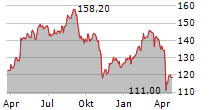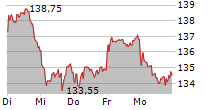20 October 2025
Saphnelo subcutaneous self-administration recommended for approval in EU by CHMP for systemic lupus erythematosus
Recommendation based on TULIP-SC Phase III trial results showing first-in-class Saphnelo reduced disease activity via once-weekly subcutaneous administration
AstraZeneca's Saphnelo (anifrolumab) has been recommended for approval in the European Union (EU) as a self-administered once-weekly pre-filled pen for adult patients with systemic lupus erythematosus (SLE) on top of standard therapy.
The Committee for Medicinal Products for Human Use (CHMP) of the European Medicines Agency based its positive opinion on interim results from the Phase III TULIP-SC trial, which showed that subcutaneous (SC) administration of Saphnelo led to a statistically significant and clinically meaningful reduction in disease activity compared to placebo in participants with moderate to severe, active, autoantibody-positive SLE while receiving standard therapy.1,2 The safety profile observed was consistent with the known clinical profile of Saphnelo administered as an intravenous (IV) infusion.3-5
Professor Thomas Dörner, Rheumatologist and Professor of Rheumatology and Hemostaseology at Charité University Hospital, Berlin, Germany and investigator of the TULIP-SC trial said: "The positive recommendation for the subcutaneous administration of anifrolumab in the EU is highly encouraging for people living with systemic lupus erythematosus, as many still rely on oral corticosteroids, which carry significant side effects and are known to accelerate damage and functional impairment. With the latest treatment recommendations for SLE now placing increased importance on the use of biologics and earlier intervention to target remission while minimising steroids, a subcutaneous form of anifrolumab has the potential to offer broader access for patients."
Ruud Dobber, Executive Vice President, BioPharmaceuticals Business Unit, AstraZeneca, said: "Saphnelo IV infusion has already helped transform outcomes for many patients with systemic lupus erythematosus. With this positive CHMP recommendation, we're one step closer to offering the clinically meaningful benefits of Saphnelo to more people in a convenient, once-weekly self-administration option. We are also advancing a robust development programme to explore Saphnelo's potential in other diseases where type 1 interferon plays a central role, including cutaneous lupus erythematosus, lupus nephritis, myositis and systemic sclerosis."
SLE is a debilitating autoimmune condition impacting more than 3.4 million people globally.6 It primarily affects women and can cause pain, rashes, fatigue, swelling in joints and fevers.7-11 In Europe, people with SLE have a two to three times increased risk of death compared to the overall population.12 While oral corticosteroids are often used to provide relief from SLE symptoms, they are associated with adverse events and do not target the underlying drivers of the disease.13-15 Approximately 70% of people in Europe who are on biologic therapy for SLE are already receiving a subcutaneous administration option.16
Subcutaneous administration of Saphnelo is under regulatory review in several other countries around the world. Saphnelo IV infusion is approved for the treatment of moderate to severe SLE in more than 70 countries worldwide including the US, EU and Japan, with regulatory reviews ongoing in other countries. To date, more than 40,000 patients globally have been treated with Saphnelo.17
Notes
Financial considerations
AstraZeneca acquired global rights to?Saphnelo?through an exclusive license and collaboration agreement with Medarex, Inc. in 2004. The option for Medarex to co-promote the product expired on its acquisition by Bristol-Myers Squibb (BMS) in 2009. Under the agreement AstraZeneca will pay BMS a low to mid-teens royalty for sales dependent on geography.
Systemic lupus erythematosus
SLE is a chronic and complex autoimmune disease in which the immune system attacks healthy tissue in the body.7 An estimated 50% of people with SLE have irreversible organ damage within five years of diagnosis due to long-term corticosteroid use and disease activity.14,18 Even a small reduction in daily oral corticosteroid use (for example 1mg/day) can lower the risk of organ damage.19 Recent updates to clinical guidelines elevate the importance of treating to target remission or low disease activity and minimising the use of oral corticosteroids.9,10
EULAR treatment recommendations
The recently updated international SLE treatment recommendations from the European Alliance of Associations for Rheumatology (EULAR) emphasise the need for prompt initiation of treatment aiming at remission, which is associated with improved clinical outcomes including reduced organ damage, fewer flares, reduced hospitalisation, reduced mortality and improved health-related quality of life.10 The revised SLE treatment recommendations advise an OCS-sparing approach (a threshold of 5mg per day or less) to significantly reduce disease progression and improve quality of life for patients.10
TULIP-SC
TULIP-SC was a Phase III, multicentre, randomised, double-blind, placebo-controlled study to evaluate the efficacy and safety of a subcutaneous administration of anifrolumab versus placebo in participants aged 18 to 70 years with moderate to severe, active, autoantibody-positive SLE while receiving standard therapy (oral corticosteroids, antimalarial, and/or immunosuppressants).20
The reduction of disease activity was measured using the British Isles Lupus Assessment Group based Composite Lupus Assessment (BICLA) at week 52.20 The BICLA requires improvement in all organs with disease activity at baseline with no new flares.20
Participants (367) were randomised 1:1 to receive 120mg subcutaneous dose of anifrolumab or placebo administered via a pre-filled, single-use syringe.20 A planned interim analysis was conducted when the first 220 participants reached week 52.20 The trial also includes an open-label extension period of 52 weeks for participants who completed the 52-week treatment period.20
Saphnelo subcutaneous administration
Since 2021, Saphnelo has been available in an IV infusion administered by healthcare professionals in a hospital or clinic setting. The potential option for a subcutaneous administration with Saphnelo will enable patients and caregivers to administer the medicine at home or in clinic via a simple process.
Saphnelo
Saphnelo (anifrolumab) is a first-in-class, fully human monoclonal antibody that binds to subunit 1 of the type I interferon (IFN) receptor, blocking the activity of type I IFN.5,21 Type I IFNs, such as IFN-alpha, IFN-beta and IFN-kappa, are cytokines involved in regulating the inflammatory pathways implicated in SLE.22-27
Saphnelo continues to be evaluated in diseases where type I IFN plays a key role, including Phase III trials in cutaneous lupus erythematosus, myositis, systemic sclerosis and lupus nephritis.28-31
AstraZeneca in Respiratory & Immunology
Respiratory & Immunology, part of AstraZeneca BioPharmaceuticals, is a key disease area and growth driver to the Company.
AstraZeneca is an established leader in respiratory care with a 50-year heritage and a growing portfolio of medicines in immune-mediated diseases. The Company is committed to addressing the vast unmet needs of these chronic, often debilitating, diseases with a pipeline and portfolio of inhaled medicines, biologics and new modalities aimed at previously unreachable biologic targets. Our ambition is to deliver life-changing medicines that help eliminate COPD as a leading cause of death, eliminate asthma attacks and achieve clinical remission in immune-mediated diseases.
AstraZeneca
AstraZeneca (LSE/STO/Nasdaq: AZN) is a global, science-led biopharmaceutical company that focuses on the discovery, development, and commercialisation of prescription medicines in Oncology, Rare Diseases, and BioPharmaceuticals, including Cardiovascular, Renal & Metabolism, and Respiratory & Immunology. Based in Cambridge, UK, AstraZeneca's innovative medicines are sold in more than 125 countries and used by millions of patients worldwide. Please visit astrazeneca.com and follow the Company on Social Media @AstraZeneca.
Contacts
For details on how to contact the Investor Relations Team, please click here. For Media contacts, click here.
References
1. AstraZeneca. Saphnelo self-administration TULIP-SC Phase III trial meets primary endpoint in patients with systemic lupus erythematosus based on an interim analysis. Available at: Saphnelo self-administration TULIP-SC Phase III trial meets primary endpoint in patients with systemic lupus erythematosus based on an interim analysis. [Last accessed: October 2025].
2. Furie R, et al. What does it mean to be a British Isles Lupus Assessment group-based composite lupus assessment responder? Post hoc analysis of two phase III trials. Arthritis Rheumatol. 2021;73:2059-2068.
3. Morand E, et al. Trial of anifrolumab in active systemic lupus erythematosus. N Engl J Med. 2020;382(3):211-221.
4. Furie R, et al. Type I interferon inhibitor anifrolumab in active systemic lupus erythematosus (TULIP-1): a randomised, controlled, phase 3 trial. Lancet Rheumatol. 2019;1(4):e208-e219.
5. Furie R, et al. Anifrolumab, an anti-interferon-a receptor monoclonal antibody, in moderate-to-severe systemic lupus erythematosus. Arthritis Rheumatol. 2017;69(2):376-386.
6. Tian J, et al. Global epidemiology of systemic lupus erythematosus: a comprehensive systematic analysis and modelling study. Ann Rheum Dis. 2023;82(3):351-356.
7. Bruce IN, et al. Factors associated with damage accrual in patients with systemic lupus erythematosus: results from the systemic lupus international collaborating Clinics (SLICC) inception cohort. Ann Rheum Dis. 2015;74:1706-1713.
8. Guéry JC. Why is systemic lupus erythematosus more common in women?. Joint Bone Spine. 2019;86(3):297-299.
9. American College of Rheumatology. 2025 American College of Rheumatology (ACR) guideline for the treatment of systemic lupus erythematosus (SLE). Available at: sle-guideline-summary-2025.pdf. [Last accessed: October 2025].
10. Fanouriakis A, et al. EULAR recommendations for the management of systemic lupus erythematosus: 2023 update. Ann Rheum Dis. 2024;83:15-29.
11. Kaul A, et al. Systemic lupus erythematosus. Nat Rev Dis Primers. 2016;2:16039.
12. Barber MRW, et al. Global epidemiology of systemic lupus erythematosus. Nat Rev Rheuatol. 2021;17(9):515-532.
13. Apostolopoulos D and Morand EF. It hasn't gone away: the problem of glucocorticoid use in lupus remains. Rheumatology (Oxford). 2017;56(Suppl 1):i114-22.
14. Ji L, et al. Low-dose glucocorticoids should be withdrawn or continued in systemic lupus erythematosus? A systematic review and meta-analysis on risk of flare and damage accrual. Rheumatology. 2021;60:5517-26.
15. Lateef A and Petri M. Unmet medical needs in systemic lupus erythematosus. Arthritis Res Ther. 2012;14(Suppl 4):S4.
16. AstraZeneca data on file. REF-291165. 2025
17. AstraZeneca data on file. REF-290598. 2025.
18. Murimi-Worstell IB, et al. Association between organ damage and mortality in systemic lupus erythematosus: a systematic review and meta-analysis. BMJ Open. 2020;10:e031850.
19. Katsumata Y, et al. Risk of flare and damage accrual after tapering glucocorticoids in modified serologically active clinically quiescent patients with systemic lupus erythematosus: a multinational observational cohort study. Ann Rheum Dis. 2024;83:998-1005.
20. Clinicaltrials.gov Subcutaneous Anifrolumab in Adult Patients With Systemic Lupus Erythematosus (Tulip-SC). Available at: https://clinicaltrials.gov/study/NCT04877691. [Last accessed: October 2025].
21. Riggs JM, et al. Characterisation of anifrolumab, a fully human anti-interferon receptor antagonist antibody for the treatment of systemic lupus erythematosus. Lupus Sci Med. 2018;5(1):e000261.
22. Lauwerys BR, et al. Type I interferon blockade in systemic lupus erythematosus: where do we stand? Rheumatology. 2014;53(8):1369-1376.
23. Sarkar MK, et al. Photosensitivity and type I IFN responses in cutaneous lupus are driven by epidermal-derived interferon kappa. Ann Rheum Dis. 2018;77(11):1653-1664.
24. Jefferies CA. Regulating IRFs in IFN driven disease. Front Immunol. 2019;10:325.
25. Mai L, et al. The baseline interferon signature predicts disease severity over the subsequent 5 years in systemic lupus erythematosus. Arthritis Res Ther. 2021;23(1):29.
26. López de Padilla CM, et al. The type I interferons: basic concepts and clinical relevance in immune-mediated inflammatory diseases. Gene. 2016;576(101):14-21.
27. Rönnblom L, et al. Interferon pathway in SLE: one key to unlocking the mystery of the disease. Lupus Sci Med. 2019;6(1):e000270.
28. Clinicaltrials.gov. A 2-stage, Phase III Study to Investigate the Efficacy and Safety of Anifrolumab in Adults With Chronic and/ or Subacute Cutaneous Lupus Erythematosus (LAVENDER). Available at: https://clinicaltrials.gov/study/NCT06015737. [Last accessed: October 2025].
29. Clinicaltrials.gov. A Study to Investigate the Efficacy and Safety of Anifrolumab Administered as Subcutaneous Injection and Added to Standard of Care Compared With Placebo Added to Standard of Care in Adult Participants With Idiopathic Inflammatory Myopathies (Polymyositis and Dermatomyositis) (JASMINE). Available at: https://clinicaltrials.gov/study/NCT06455449. [Last accessed: October 2025].
30. Clinicaltrials.gov. Determine Effectiveness of Anifrolumab In SYstemic Sclerosis (DAISY). Available at: https://clinicaltrials.gov/study/NCT05925803. [Last accessed: October 2025].
31. ClinicalTrials.gov. Phase 3 Study of Anifrolumab in Adult Patients With Active Proliferative Lupus Nephritis (IRIS). Available at: https://www.clinicaltrials.gov/ct2/show/NCT05138133. [Last accessed: October 2025].
Matthew Bowden
Company Secretary
AstraZeneca PLC
This information is provided by RNS, the news service of the London Stock Exchange. RNS is approved by the Financial Conduct Authority to act as a Primary Information Provider in the United Kingdom. Terms and conditions relating to the use and distribution of this information may apply. For further information, please contact rns@lseg.com or visit www.rns.com.


